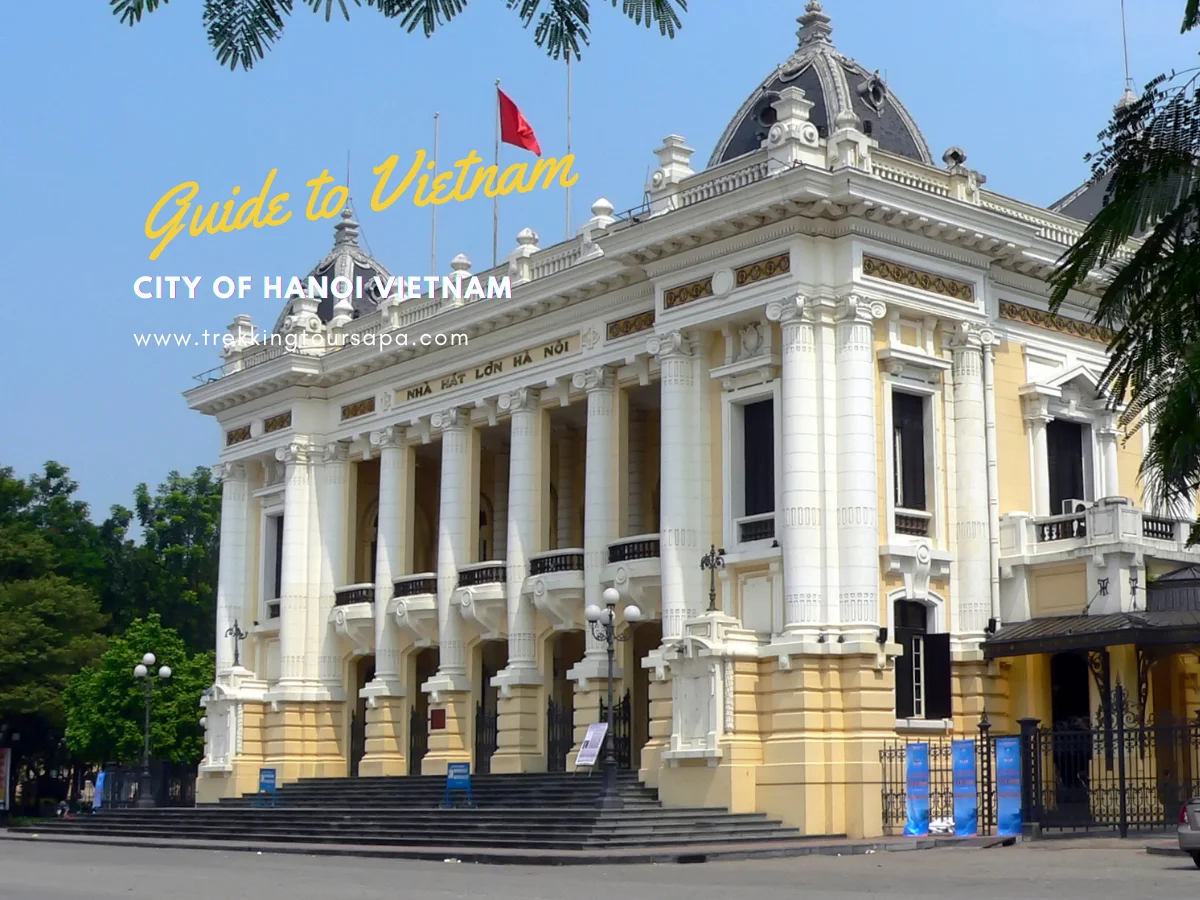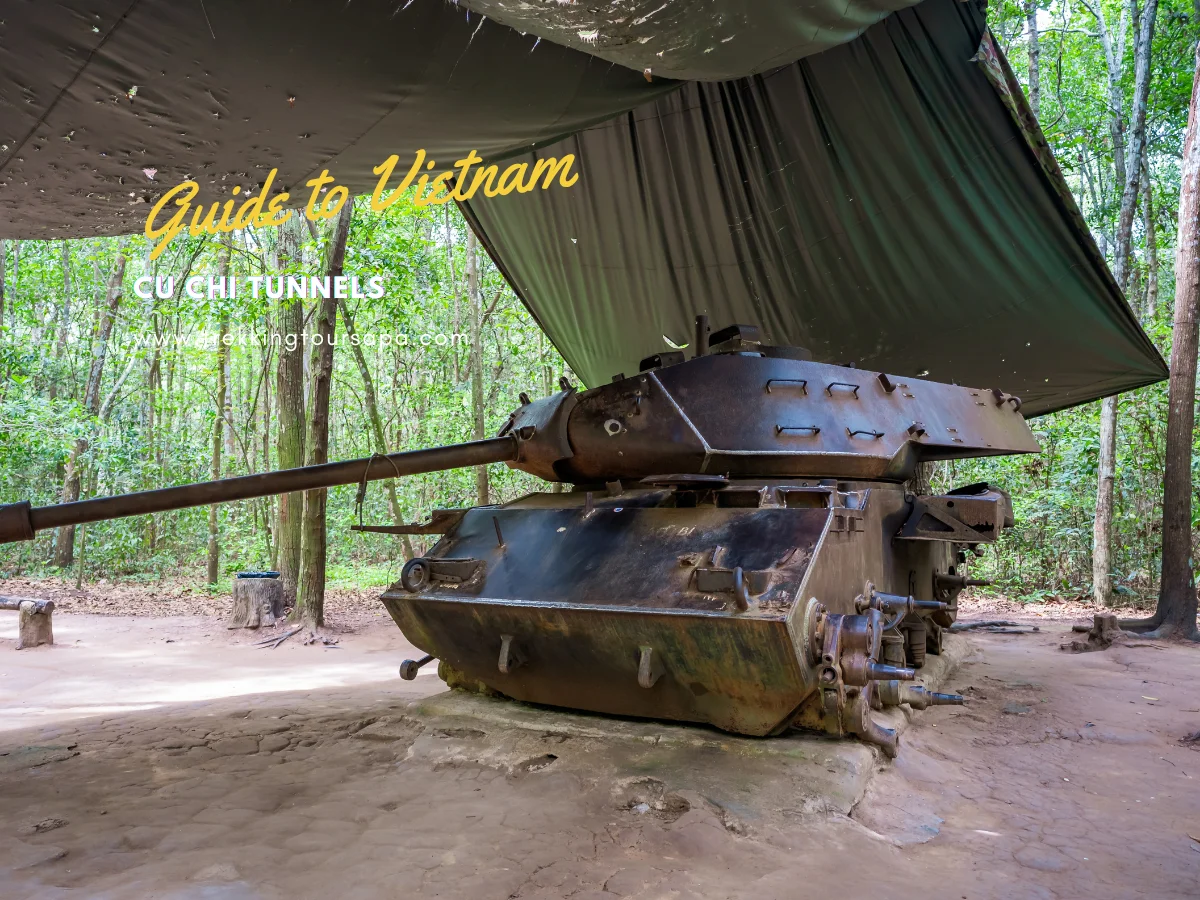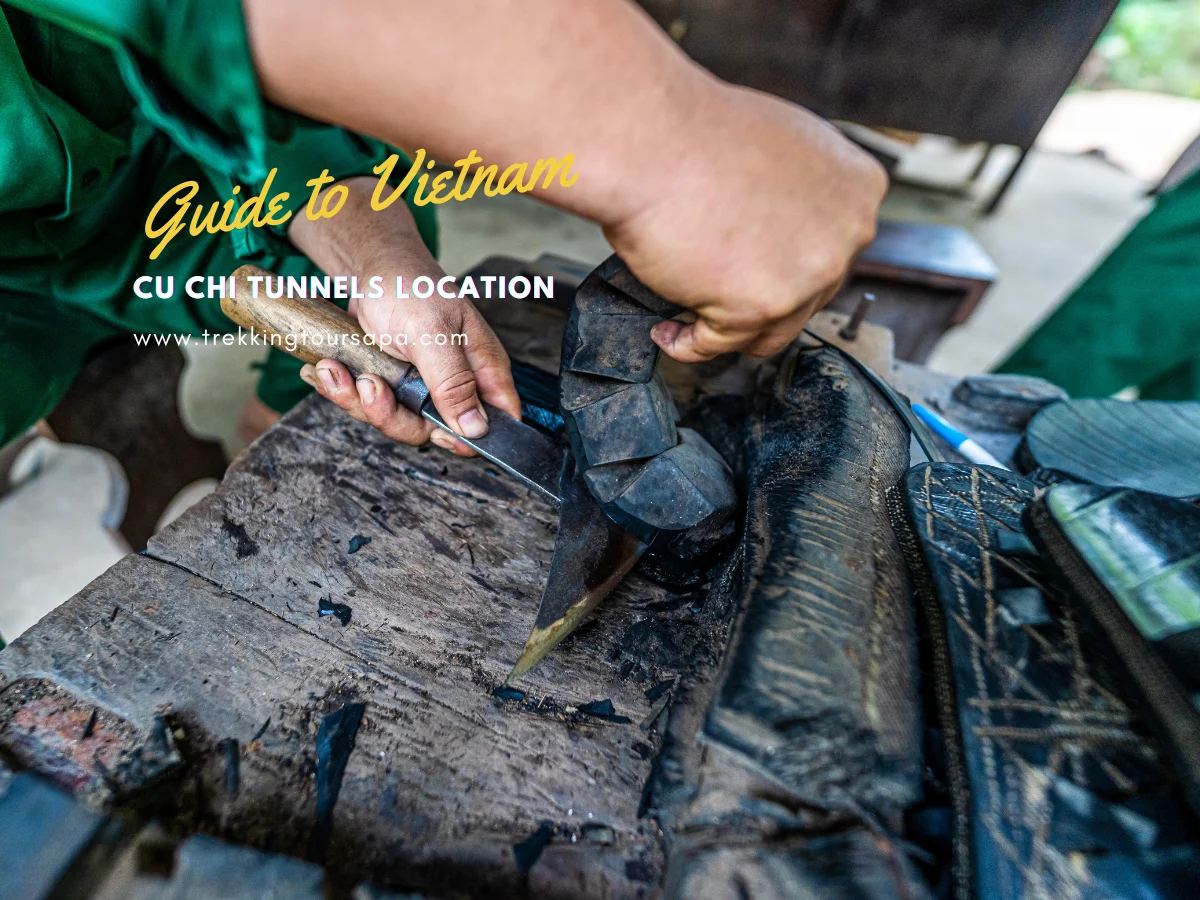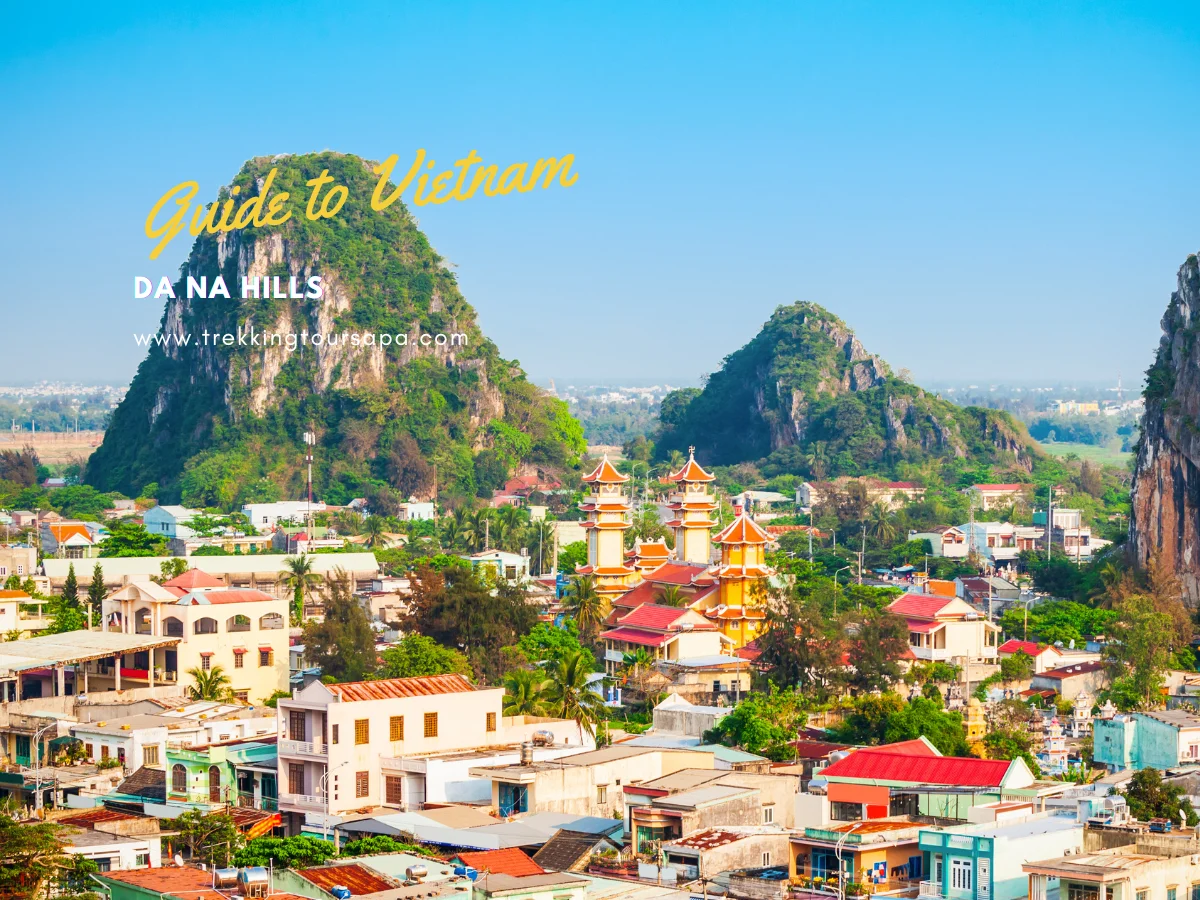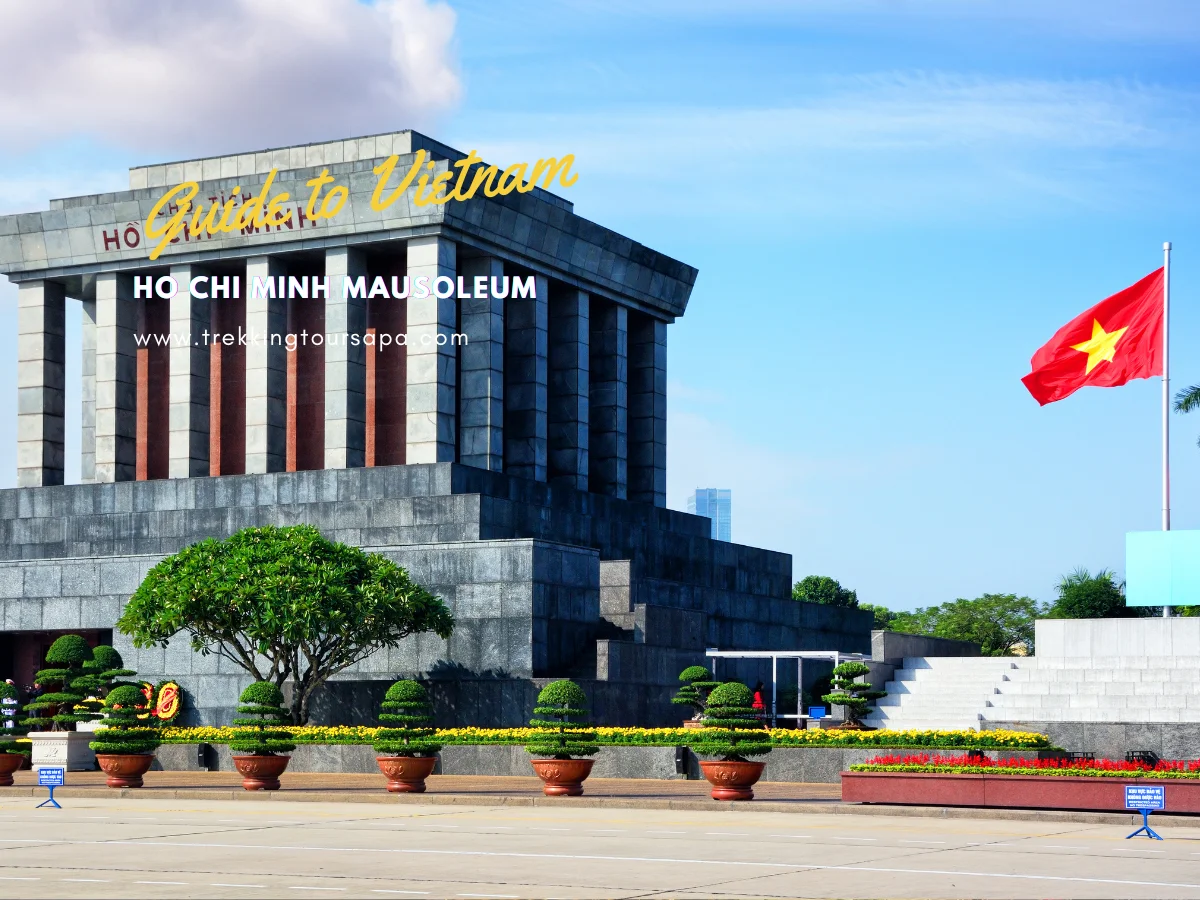As we start our journey in the city of Hanoi, Vietnam, we dive into a world full of culture and energy. Hanoi, the Hanoi capital of Vietnam, is a mix of old traditions and new vibes. We can walk its lively streets, see amazing historical spots, and try delicious food that will wow us all. This city’s charm is why it’s a top spot for anyone wanting to see Vietnam’s best.
Hanoi has been Vietnam’s capital since 1010, under the Ly dynasty. Its changing identity shows in the many influences we see today. Places like the Ho Chi Minh Mausoleum and the Temple of Literature, built in 1070, remind us of Hanoi’s deep history.
If you’re into Vietnam travel Hanoi, spend at least three days to see it all. You’ll love its natural beauty and cultural spots all over the city.
City Of Hanoi Vietnam Key Takeaways
- The city of Hanoi has a rich historical background, including multiple capitals throughout its history.
- Hanoi became Vietnam’s capital in 1010, showcasing its longstanding importance.
- Significant sites like the Ho Chi Minh Mausoleum and the Temple of Literature reflect Hanoi’s heritage.
- The city offers a delightful culinary scene worth exploring.
- We should aim for a stay of at least three days to fully appreciate all that Hanoi has to offer.
Table of Contents
ToggleIntroduction to Hanoi
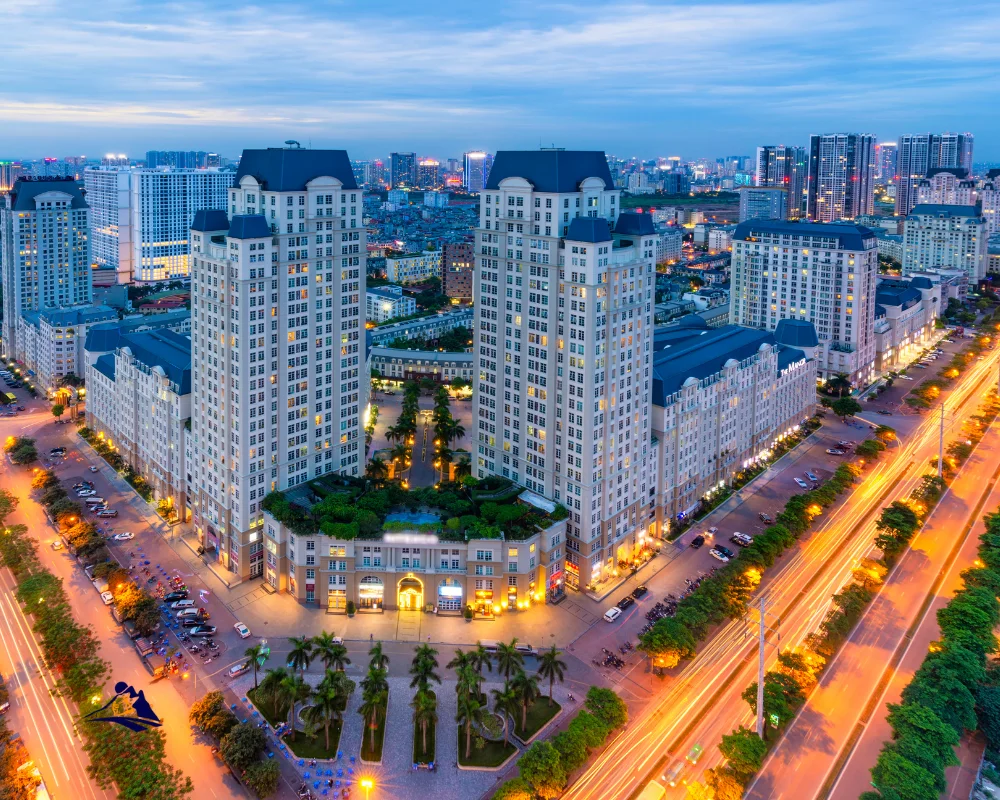
Hanoi is the exciting capital of Vietnam, filled with Hanoi culture and rich hanoi history. It covers 3,359.84 km² and has a bustling urban area of 319.56 km². Over 8.5 million people call it home, mixing old traditions with new dreams.
Hanoi has been a home for about 4,000 years. It was under Chinese rule from 111 BC, leaving a lasting mark. Today, it’s a city that looks to the past but moves forward, seen in its architecture and growth.
The city’s population has grown fast, with 4.2 million in the city and 4.3 million in the countryside. The Old Quarter keeps its traditional feel while welcoming new ideas.
Hanoi’s climate is warm and humid, with four seasons and an average temperature of 23.6 °C (74 °F). The best times to visit are from October to December and February to April, when it’s cooler and drier.
In 2022, Hanoi welcomed 18.7 million visitors. It shows how hanoi culture and hanoi history come together, drawing people to its magical streets.
Hanoi: The Heart of Vietnam’s History
Hanoi is a key part of Vietnam’s history. It has played a big role in the country’s story. The city was founded in 1010 by Emperor Ly Thai To, making it Vietnam’s capital.
Over time, Hanoi faced many challenges, like wars and colonial rule. The French colonial era left a mark on its culture and buildings.

Today, Hanoi’s history still affects life here. The people’s strong spirit is seen in the many craft villages around. These villages have been home to millions, keeping traditions alive.
Places like Quang Phu Cau Incense Village show off local skills. Visitors love to see the craftsmanship there.
Exploring Hanoi’s Hanoi attractions reveals its importance. The Temple of Literature, built in 1070, is Vietnam’s first university. It shows the city’s dedication to learning and culture.
The Ho Chi Minh Mausoleum is another key site. It attracts people from all over, showing Hanoi’s role in Vietnam’s fight for freedom.
Hanoi’s culture is also vibrant, with traditions like the Water Puppet Theater. This theater has been around since the 11th century. It shows how Hanoi is both historic and lively today.
To enjoy Hanoi, plan your trip with a budget in mind. This guide offers tips for seeing the city without spending too much.
Cultural Tapestry of the City of Hanoi Vietnam
Exploring Hanoi shows how history and culture are deeply connected. The city’s story is influenced by Chinese dynasties and French colonizers. These influences have shaped its architecture and food, adding flavors that tell of its past and present.
Sapa 1 Day Tours
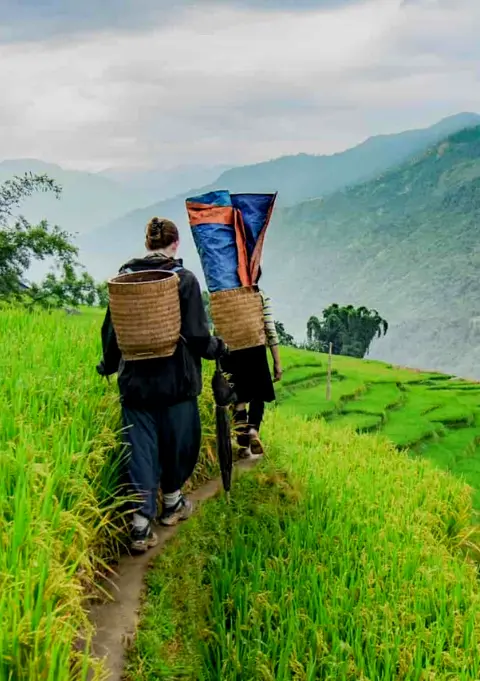
- 1 day experience
- Moderate to challenging
- Cultural immersion & active adventure
- Rice fields, valleys & villages
- Private tours
- Vegan-friendly
Sapa 2 Day Tours
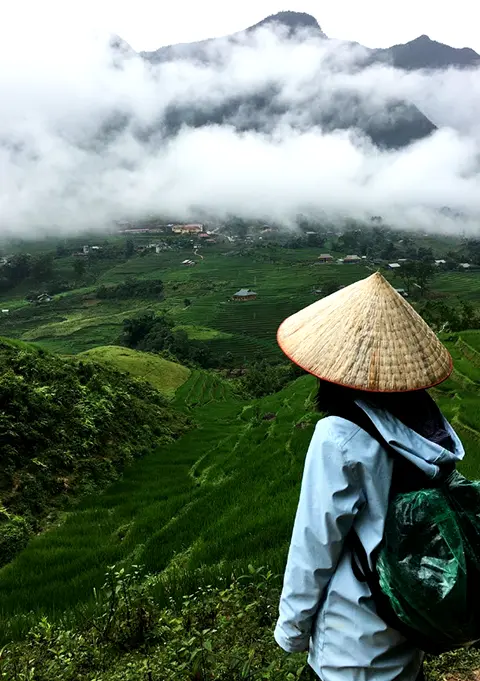
- 2 days 1 night experience
- Moderate to challenging
- Cultural immersion & active adventure
- Mountains, valleys, rice fields and villages
- Private tours
- Vegan-friendly
Sapa 3 Day Tours
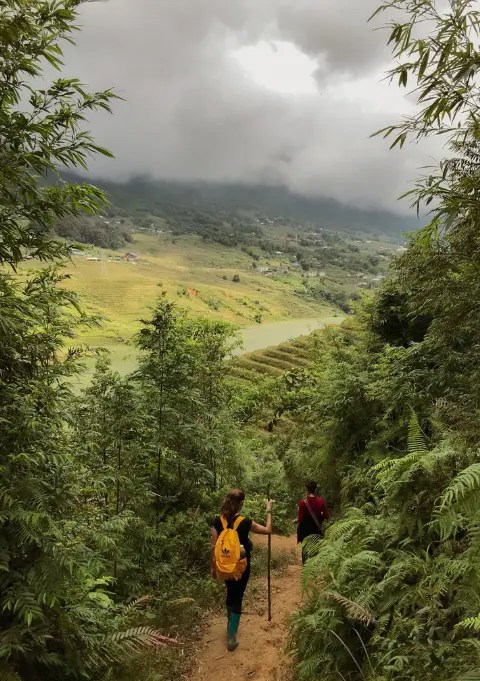
- 3 days 2 night experience
- Moderate to challenging
- Cultural immersion & active adventure
- Mountains, valley, rice fields & villages
- Private tours
- Vegan-friendly
Sapa 4 Day Tours
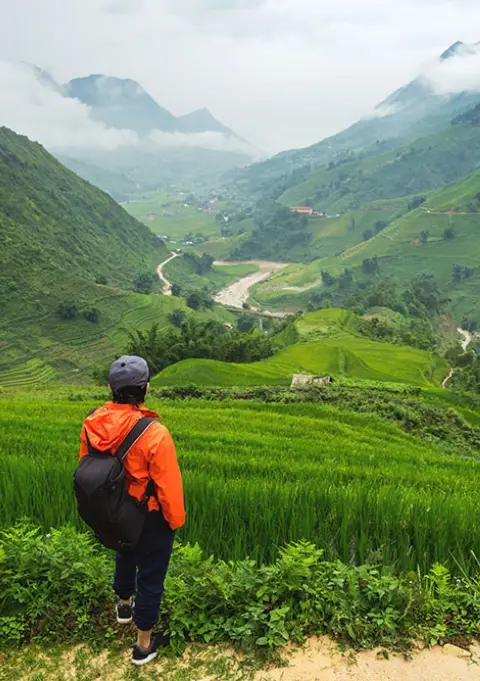
- 4 days 3 night experience
- Moderate to challenging
- Cultural immersion & active adventure
- Mountains, valleys, rice fields & villages
- Private tours – Less Touristic
- Vegan-friendly
Historical Influences on Hanoi’s Culture
The history of Hanoi is clear in every corner of the city. It was the capital of the Ly Dynasty since 1010. French colonial architecture adds a unique touch to the city’s look. Landmarks like the Ho Chi Minh Mausoleum honor Vietnam’s leaders and heritage.
Blending Traditions and Modernity
Today, Hanoi mixes old traditions with new ways of living. Traditional markets like Dong Xuan showcase local crafts, while modern stores meet changing tastes. Streets buzz with vendors serving famous dishes like Pho and Bun Cha.
Yet, modern comforts don’t erase the city’s deep-rooted customs. Creative coffee shops and new buildings stand next to ancient temples. Hanoi’s vibrant mix of old and new celebrates its rich cultural heritage.
Exploring Hanoi’s Geography and Climate
Hanoi is in the Red River Delta, where its geography shapes our experiences and culture. Its elevation and water bodies like the Red River and Da River make a diverse ecosystem. This hanoi geography creates beautiful landscapes with lakes and parks, making it a joy to explore.
The climate here is tropical monsoon, with seasons that invite us all year. High humidity and over 1,700mm of rain make the hanoi climate refreshing. Summer is lively, while winters are cooler. Each season adds to our travel joy.

Hanoi’s natural beauty also supports cultural activities. Our walks and bike tours reveal stunning spots where the climate enhances our experiences. The city’s charm comes from its geography and climate, making our adventures special. Learn more about our journey in Hanoi here.
| Season | Temperature Range (°C) | Notable Attractions |
|---|---|---|
| Spring | 15 – 25 | Hoan Kiem Lake, West Lake |
| Summer | 25 – 35 | Old Quarter, Street Food Tours |
| Autumn | 18 – 28 | Temple of Literature, Festivals |
| Winter | 10 – 20 | City Museums, Night Markets |
Top 10 Must-See Attractions in Hanoi
Exploring Hanoi’s attractions, we find stunning landmarks that show the city’s history. Each site gives us a peek into the city’s soul. It highlights its cultural significance and history. Here are five attractions we must see.
Ho Chi Minh Mausoleum

The Ho Chi Minh Mausoleum honors Vietnam’s leader. It’s a complex that shows the country’s history. Visitors can feel the solemn atmosphere and learn about his impact.
Temple of Literature
The Temple of Literature is Vietnam’s first national university. It’s a mix of ancient architecture and calm courtyards. It reminds us of the value of knowledge in Vietnamese history.
Hanoi Old Quarter
The Hanoi Old Quarter is full of narrow, lively streets. It’s a place where local life, food, and culture meet. Every corner has new stories and surprises.
One Pillar Pagoda
The One Pillar Pagoda is a symbol of spirituality. Its unique design and history make it a key site in Hanoi. It shows the spiritual heritage of the Vietnamese people.
Hoa Lo Prison
Hoa Lo Prison, known as the “Hanoi Hilton,” shows Vietnam’s history. It has artifacts and stories of the Vietnamese people’s resilience. Walking through, we understand the struggles of those imprisoned.
| Attraction | Significance | Year Established |
|---|---|---|
| Ho Chi Minh Mausoleum | Commemoration of Ho Chi Minh | 1975 |
| Temple of Literature | First national university | 1070 |
| Hanoi Old Quarter | Historical center of commerce and culture | Up to 1000 years |
| One Pillar Pagoda | Symbol of Vietnamese Buddhism | 1049 |
| Hoa Lo Prison | Prison for political prisoners | 1896 |
Sapa 1 Day Tours

- 1 day experience
- Moderate to challenging
- Cultural immersion & active adventure
- Rice fields, valleys & villages
- Private tours
- Vegan-friendly
Sapa 2 Day Tours

- 2 days 1 night experience
- Moderate to challenging
- Cultural immersion & active adventure
- Mountains, valleys, rice fields and villages
- Private tours
- Vegan-friendly
Sapa 3 Day Tours

- 3 days 2 night experience
- Moderate to challenging
- Cultural immersion & active adventure
- Mountains, valley, rice fields & villages
- Private tours
- Vegan-friendly
Sapa 4 Day Tours

- 4 days 3 night experience
- Moderate to challenging
- Cultural immersion & active adventure
- Mountains, valleys, rice fields & villages
- Private tours – Less Touristic
- Vegan-friendly
Delightful Hanoi Cuisine
Exploring Vietnam travel hanoi, we find ourselves drawn to the delightful hanoi cuisine. This vibrant scene offers a mix of traditional and modern flavors. Each dish tells a story, inviting us to dive into the city’s rich culture.
Signature Dishes to Try
Our journey through Hanoi’s flavors introduces us to must-try dishes:
- Phở bò (beef noodle soup): Ranked 34th on TasteAtlas’s list in 2022, it’s known for its pure broth.
- Bánh mì: A mix of Vietnamese and French cuisine, it’s famous for its balanced flavors.
- Bún chả: A lunch favorite, it pairs chargrilled pork with a unique touch from each vendor.
- Bún ốc: This soup features snails and a tangy broth, often with beef or sausage.
- Chả cá Lã Vọng: Made tableside, it combines dill, scallions, vermicelli, peanuts, and fermented shrimp paste.
- Nộm bò khô: A beef jerky salad that shows Hanoi’s love for flavors and textures.
- Bún đậu Mắm tôm: A rustic dish of noodles, tofu, and shrimp paste sauce.
- Mì vằn thắn: Hanoi’s creative noodles with dumplings, chives, and crispy pork rind.
- Bún cá: A fish noodle soup with sweet and sour flavors, perfect for hot days.
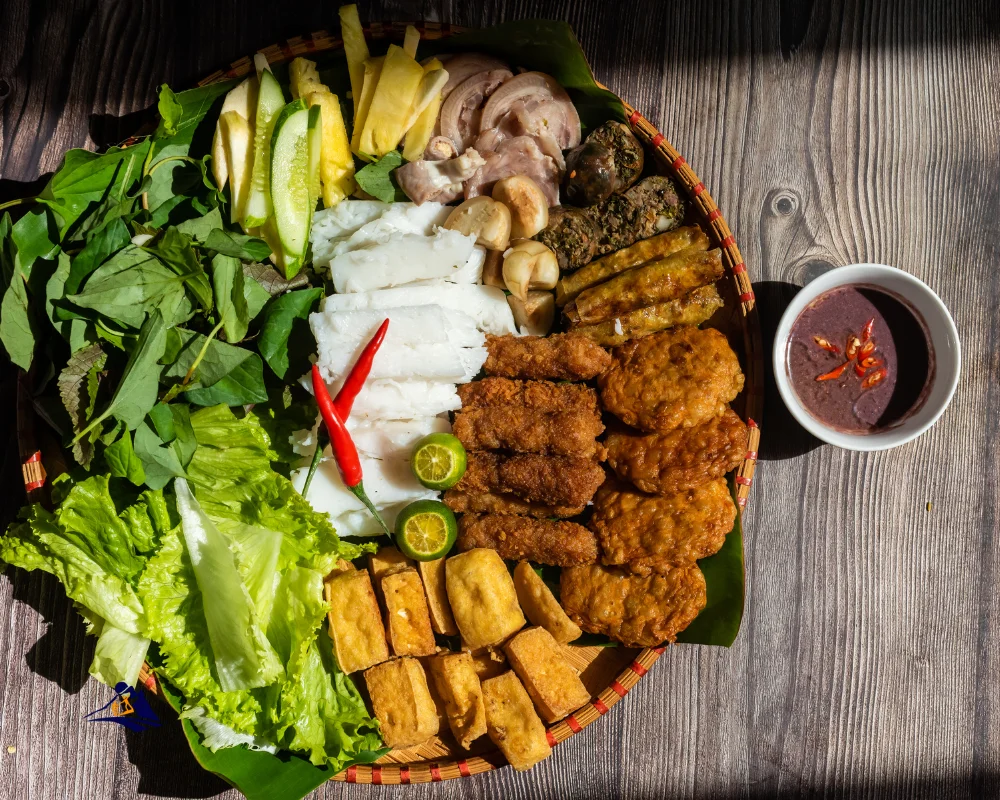
Street Food Culture in Hanoi
Street food is at the heart of Hanoi’s culinary scene. Whether walking through markets or stopping at street stalls, delicious food awaits. It’s more than just eating; it’s diving into the local way of life.
With 76% of dishes featuring meat, there’s plenty for meat lovers. Also, 12% of eateries have been around for over a century. As we explore, we find unique Xôi (sticky rice) at three locations.
For a full look at Hanoi’s cuisine, including unique dishes and eateries, check out this guide. Each visit shows why this city is a top spot for food enthusiasts.
Visiting the French Quarter of Hanoi
The hanoi french quarter is a mix of history and beauty. It has wide boulevards with stunning colonial buildings. These were built in the late 19th and early 20th centuries.
Places like the Hanoi Opera House and St. Joseph’s Cathedral stand out. The cathedral was built in 1886 for the Catholic community. Walking here, you feel a calm that’s different from the Old Quarter’s energy.
Exploring the hanoi french quarter feels like going back in time. The buildings show French influence with their design. You’ll see arched windows, detailed ornamentation, and grand pillars.
Places like the Hoa Lo Prison Museum and the Vietnam National Museum of History tell Vietnam’s story. They show the country’s complex past.

Food lovers will enjoy the French Quarter’s unique dishes. Restaurants like La Verticale and cafés like Café de Paris are great for food. With many MICHELIN-listed spots here, dining is a memorable experience.
Getting to the French Quarter is easy, making it simple to visit from the Old Quarter. The best time to explore is from October to April when the weather is mild. Walking here lets you enjoy the area’s history and culture.
Natural Beauty: Hoan Kiem Lake and Its Significance
Hoan Kiem Lake is a beautiful spot in the heart of Hanoi. It’s a calm escape from the city’s busy life. The lake, known as the Lake of the Returned Sword, has a rich history from the 15th century.
Legend says Emperor Le Loi got a magical sword from a divine turtle. This story links the lake to Vietnamese folklore.
Turtle Tower stands at the lake’s center. It’s a historical gem over 200 years old. Ngoc Son Temple on Jade Island honors famous thinkers and heroes, offering a glimpse into Hanoi’s culture.
The lake area buzzes with life, especially on weekends. Streets are filled with colorful stalls and food. People enjoy walks, especially in the morning or late afternoon.
Trying local foods like pho, banh mi, and Vietnamese iced coffee is a must. These dishes are found in nearby cafes.
Getting to the lake is simple with public transport, taxis, or walking. While enjoying the beauty, be careful of pickpockets and scammers. There’s no entrance fee, making it a top spot for exploring Hanoi.
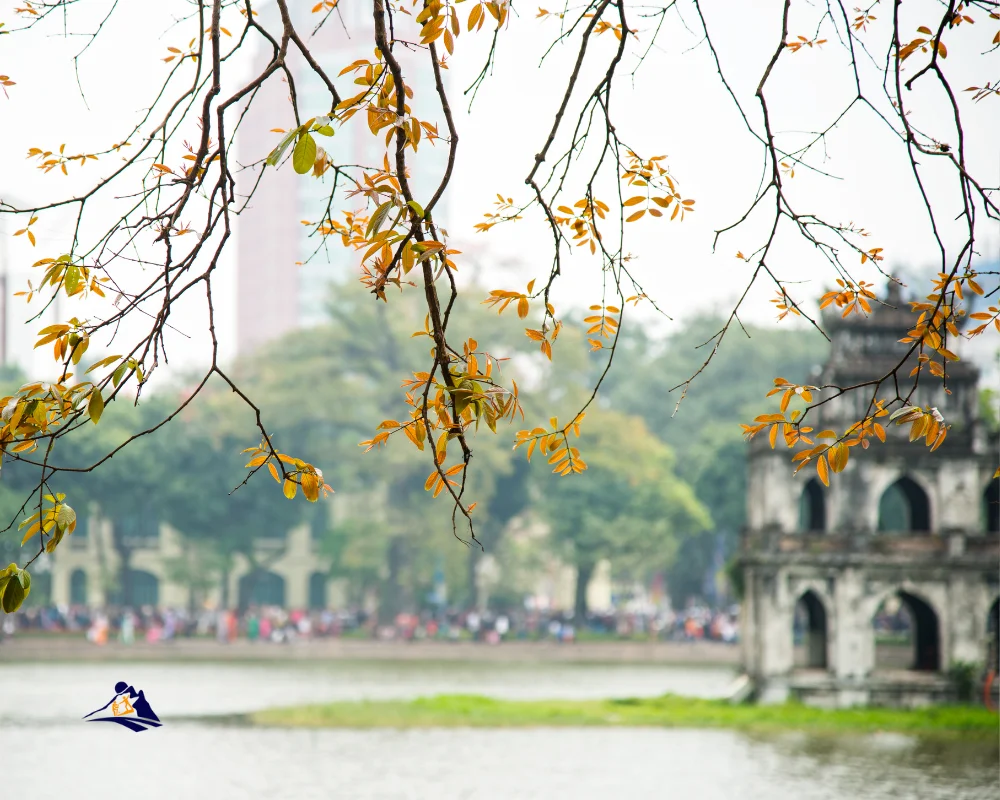
Hanoi’s Vibrant Cultural Experiences
Hanoi, the capital of Vietnam, is a city full of life and culture. It combines history, tradition, and community spirit in a unique way. Here, we can enjoy captivating performances and festive celebrations, diving into its rich artistic scene.
Water Puppet Theatre Performances
The Thang Long Water Puppet Theatre is a must-see in Vietnam travel Hanoi. It dates back to the 11th century and tells stories of Vietnamese folklore through puppetry on water. The live music and puppet movements are mesmerizing, offering a glimpse into Vietnamese culture.
Festivals and Local Events
Hanoi celebrates its heritage all year with various festivals. These events showcase traditional music, dance, and food, letting us experience Hanoi culture up close. From the Tet Festival to neighborhood gatherings, each event is a chance to connect with the city’s traditions.

Walking through Hanoi’s streets, we find bustling markets filled with local crafts and flavors. The city’s cultural traditions blend with modern life, creating an exciting atmosphere. There’s always something new to discover and celebrate in this vibrant city.
For more insights into the rich experiences that await us, check out what to do around Hanoi.
Day Trips and Nearby Attractions
Exploring Hanoi’s surroundings offers exciting day trips. These trips help us understand the geography of Hanoi. They provide a nice contrast to city life.
Exploring West Lake
West Lake is a peaceful break from the city’s noise. It has stunning views, lively cafes, and ancient temples. We can enjoy walks by the water or try local foods at cafes.
There are many activities for both calm and adventurous days. It’s a great place for a day trip.
Traditional Crafts at Bat Trang Pottery Village
Bat Trang Pottery Village is just 15 km from Hanoi. It’s known for its traditional crafts and pottery. Visitors can make their own pottery, showing Vietnam’s artistic side.
Sapa 1 Day Tours

- 1 day experience
- Moderate to challenging
- Cultural immersion & active adventure
- Rice fields, valleys & villages
- Private tours
- Vegan-friendly
Sapa 2 Day Tours

- 2 days 1 night experience
- Moderate to challenging
- Cultural immersion & active adventure
- Mountains, valleys, rice fields and villages
- Private tours
- Vegan-friendly
Sapa 3 Day Tours

- 3 days 2 night experience
- Moderate to challenging
- Cultural immersion & active adventure
- Mountains, valley, rice fields & villages
- Private tours
- Vegan-friendly
Sapa 4 Day Tours

- 4 days 3 night experience
- Moderate to challenging
- Cultural immersion & active adventure
- Mountains, valleys, rice fields & villages
- Private tours – Less Touristic
- Vegan-friendly
Visiting this village lets us appreciate local artisans and their skills. These skills have been passed down for generations.
Exploring nearby attractions shows Hanoi’s vibrant culture and natural beauty. West Lake offers calm, while Bat Trang Village is full of creativity. These places add to our adventures in Vietnam.
| Attraction | Distance from Hanoi | Highlights |
|---|---|---|
| West Lake | 5 km | Cafes, temples, scenic views |
| Bat Trang Pottery Village | 15 km | Pottery making, local artisans |
| Duong Lam Ancient Village | 50 km | Traditional North Vietnamese architecture |
| Perfume Pagoda | 60 km | Religious site, scenic hikes |
| Trang An Landscape Complex | 100 km | Scenic boat tours, breathtaking landscapes |
Getting Around in Hanoi
Exploring Hanoi is an exciting adventure. Knowing how to get around is key to enjoying this lively city. The streets are full of ways to travel, each showing a different side of Hanoi culture. Using local transport makes our journey easier and lets us connect with the city.
One great way to see the Hanoi Old Quarter is by cyclo. A ride costs between 100,000 and 150,000 VND, or about $4.6 to $6.9 an hour. For a quicker option, Grab is popular, with trips from the airport to the Old Town costing between 280,000 and 380,000 VND, or $12 to $18.
For those watching their budget, the public bus is a good choice. A ticket on Bus Line 86 from the airport to the Old Quarter is only 30,000 VND, or about $1.40. Bus fares in the city are also low, ranging from 7,000 to 10,000 VND, making it a cost-effective way to get around.
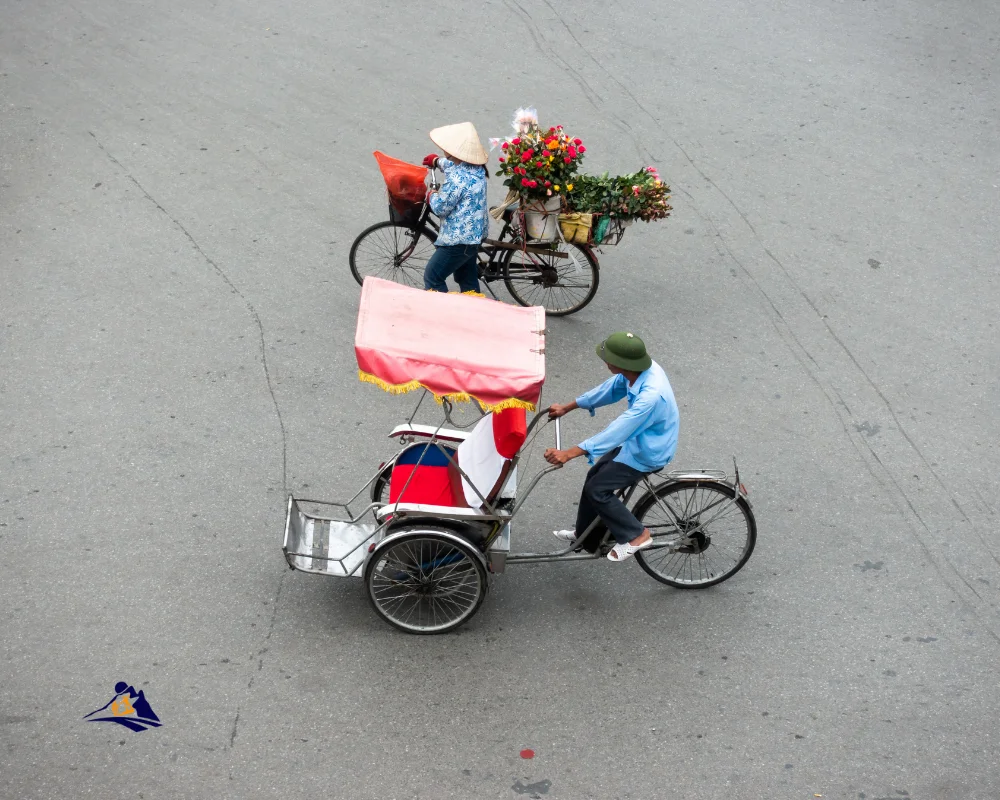
Bicycle rentals are also available for just $1 a day. This lets us enjoy the city’s beautiful routes. With over 6.5 million scooters, riding a scooter or electric bike is very popular. Taxis are fast but can be expensive, with rates starting at 10,000 to 15,000 VND per kilometer.
For a deeper cultural experience, try a walking tour with a local guide. These tours give us a glimpse into Hanoi’s history and daily life. Walking during less busy times makes our journey smoother and more fun.
| Transportation Type | Approximate Cost | Notes |
|---|---|---|
| Cyclo Ride | 100,000 – 150,000 VND ($4.6 – $6.9) | Ideal for a relaxed exploration of the Old Quarter. |
| Grab Car (Airport to Old Town) | 280,000 – 380,000 VND ($12 – $18) | Convenient for direct airport transfers. |
| Bus Line 86 (Airport to Old Quarter) | 30,000 VND ($1.4) | Most economical option from the airport. |
| Public Bus Fare | 7,000 – 10,000 VND | Cash only; great for getting around the city. |
| Bicycle Rentals | $1 per day | Fun and affordable way to see more of the city. |
| Taxi Meter Rates | 10,000 – 15,000 VND/km | Fast but can be expensive. |
Knowing how to get around Hanoi makes our trip better. It lets us fully enjoy the city’s lively vibe and rich traditions.
Best Times to Visit Hanoi
Knowing when to visit Hanoi Vietnam helps us see its beauty. The city has four seasons: Spring, Summer, Autumn, and Winter. Each season has its own charm, fitting different tastes.
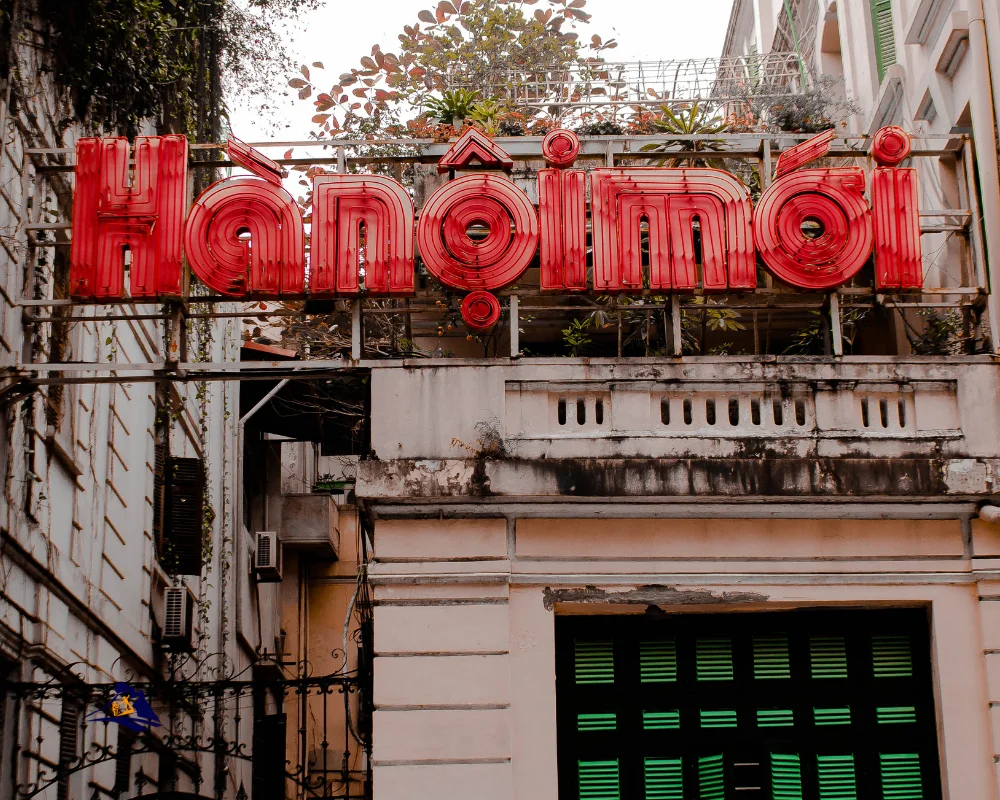
In Spring, from February to March, it’s mild with temperatures between 15°C and 26°C. The humidity can be high, but the flowers bloom beautifully. It’s a great time for sightseeing.
Summer brings hot weather from April to July, with temperatures up to 35°C. June and July see a lot of rain. It’s wise to wear light clothes and carry an umbrella. Summer is busy, but many prefer cooler months.
Autumn is the best season, from August to October. Temperatures are pleasant, and humidity is low. It’s perfect for outdoor activities and enjoying the city’s views.
In Winter, from November to December, it gets cooler, with temperatures between 10°C and 20°C. January can be very cold and foggy. Fewer tourists visit, but local events are worth seeing.
For the best experience, visit Hanoi from November to June. Skip the hot months of June, July, and August. If you’re here for Tet in February, expect some places to be closed, offering a unique cultural experience.
This advice helps us enjoy Hanoi more. We can dive into its traditions and lively atmosphere.
Conclusion
Hanoi, Vietnam, is a city where old meets new. It has a rich history, a diverse culture, and delicious food. This makes it a top spot for those wanting a real taste of Vietnam.
The city’s architecture is a mix of ancient temples and colonial buildings. This unique blend adds to its charm. It’s something that keeps visitors coming back for more.
Hanoi has been named a “Creative City” and “City for Peace” by UNESCO. These titles show the city’s dedication to culture and peace. It’s also getting support from new laws, promising a bright future.
Exploring Hanoi is an adventure. You can walk through busy streets or relax by Hoan Kiem Lake. The city offers many experiences that are both exciting and peaceful.
Let’s celebrate Hanoi’s vibrant spirit as we plan our next visit. To discover more about this amazing city, check out Hanoi’s bustling atmosphere.
Sapa 1 Day Tours

- 1 day experience
- Moderate to challenging
- Cultural immersion & active adventure
- Rice fields, valleys & villages
- Private tours
- Vegan-friendly
Sapa 2 Day Tours

- 2 days 1 night experience
- Moderate to challenging
- Cultural immersion & active adventure
- Mountains, valleys, rice fields and villages
- Private tours
- Vegan-friendly
Sapa 3 Day Tours

- 3 days 2 night experience
- Moderate to challenging
- Cultural immersion & active adventure
- Mountains, valley, rice fields & villages
- Private tours
- Vegan-friendly
Sapa 4 Day Tours

- 4 days 3 night experience
- Moderate to challenging
- Cultural immersion & active adventure
- Mountains, valleys, rice fields & villages
- Private tours – Less Touristic
- Vegan-friendly
